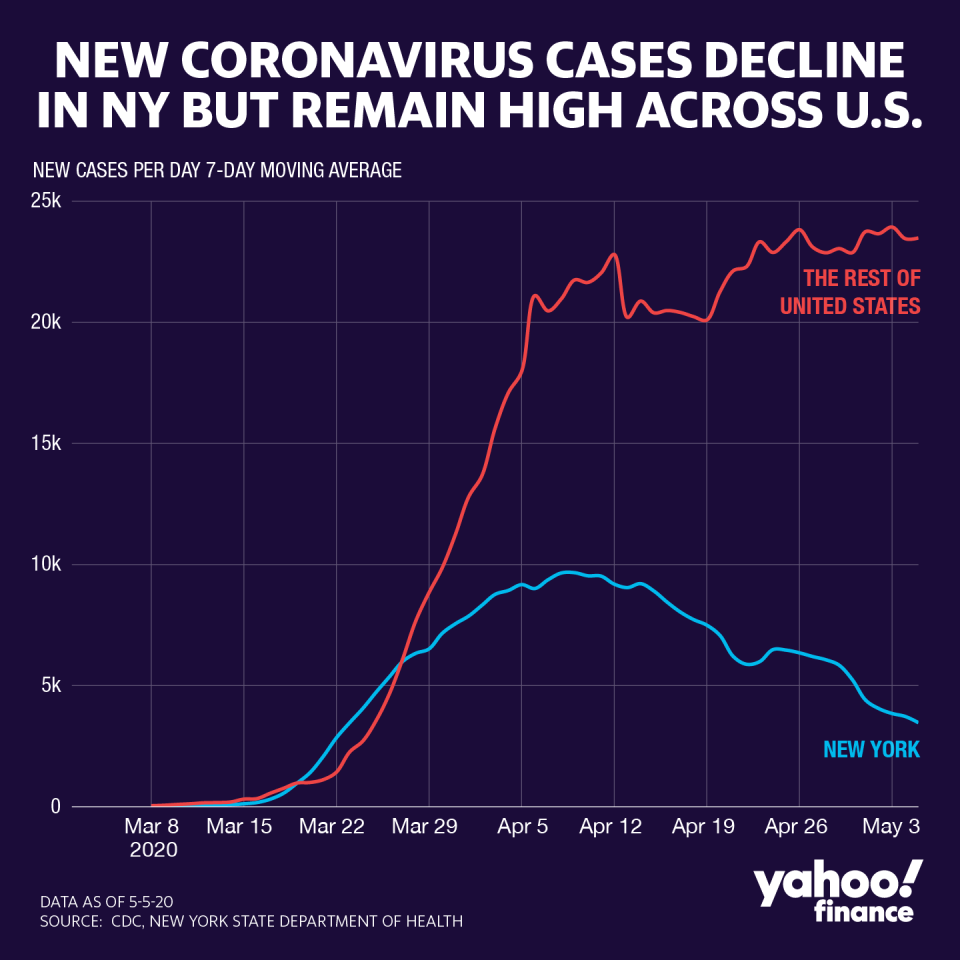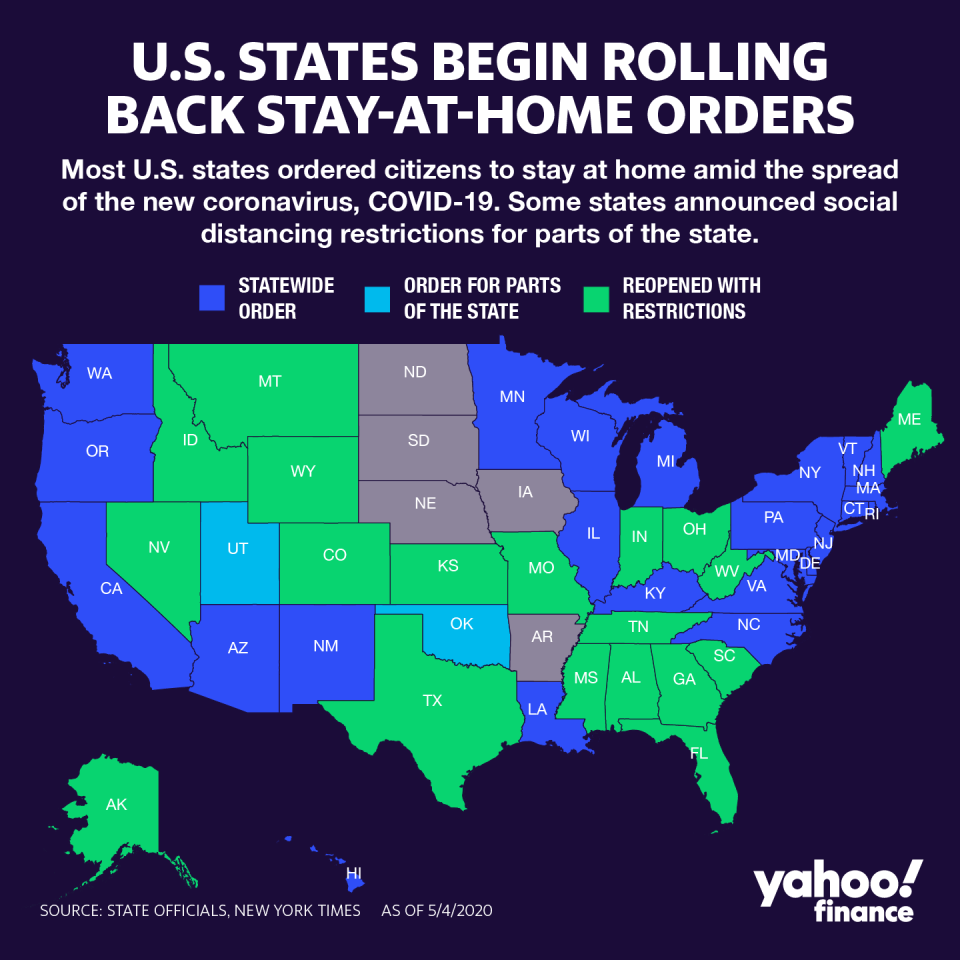Coronavirus update: US jobless numbers amplify reopening debate; US, NY case split grows
The swelling ranks of unemployed Americans took center stage on Thursday, as yet another 7-figure jobless claims number underscored the coronavirus pandemic’s devastating impact on the U.S. economy, where a vigorous debate over relaxing stay-at-home orders is underway.
Ahead of April’s U.S. nonfarm payrolls report on Friday, the Labor Department reported that a staggering 33 million workers claimed unemployment in the latest week. Despite the grim data — and still rising COVID-19 diagnoses in the world’s largest economy — markets rose on expectations that restrictions on public movement would continue to be eased.
That debate is being clouded by a rising number of cases, and a lack of available testing in the U.S. The global pandemic has now infected over 3.7 million, and caused more than 264,000 deaths. In America, cases have topped 1.2 million while claiming over 73,000 lives — a figure that former Centers for Disease Control director Tom Frieden warned could rise even higher by the end of the month.

New York and New Jersey, the two largest clusters of COVID-19 infections in the country, have seen a leveling off in hospitalizations and deaths. However, both states are still struggling to contain the outbreak, at a time when the rest of the country’s numbers are on the collective rise.
Overall the domestic curve is flattening, but if New York is removed, the curve looks very different: There appears to be a clear downward trend in NY diagnoses amid an upward slope in the rest of U.S. states. Ironically enough, the Empire State’s outbreak — which accounts for nearly one-third of the U.S. cases — contributed to a gradual seeding that infected much of the country, according to data cited by The New York Times on Thursday.
A still worryingly-high U.S. case count is coloring the debate over reopening the economy, which is taking place across numerous regions, and at various paces. California announced it was entering the second phase of its reopening, that would include access to retail. However, that would limit picking up orders outside the store, according to Gov. Gavin Newson.
Florida, meanwhile, has allowed stores to reopen and operate at 25% capacity.
All eyes on big pharma

The unprecedented shutdown is putting heavy demand on the pharmaceutical sector, which has expedited timelines for treatments and vaccines. Processes that traditionally take years are being pushed through in a matter of weeks and months, as regulators expedite potential drugs that can mitigate the outbreak’s impact, and accelerate a reopening of the economy.
Moderna (MRNA), the first company to reach clinical trials for its vaccine candidate, announced during an earnings call today that it was approved to enter Phase 2 of clinical trials — which will help the company narrow down which dosing is effective for different age groups.
Executives say the company is working to ramp up production of the vaccine, and anticipate receiving an emergency use authorization by the fall — and full approval in 2021.
The fall timeline matches that of pharma giants Pfizer (PFE) and Johnson & Johnson (JNJ), who have also been working on vaccines. Pfizer has entered clinical trials and is the third company to do so in the U.S., and J&J has selected the vaccine candidate that will eventually move into clinical trials.
Gilead (GILD), whose treatment received emergency use approval last week, announced it received expedited approval in Japan. The treatment, called Veklury in Japan, is being used based on clinical trial data which emerged last week, according to the company statement.
In a Senate hearing Friday, Dr. Francis Collins, director of the National Institute of Health, expressed cautious optimism about the drug’s potential.
“While this is not a home run, it does represent a landmark,” he said, adding that the agency continues to search for more options.
Experts say that effective treatments are the only real cure for an economy that’s been laid low by the COVID-19 crisis. On that score, the retail sector has been particularly hammered, as major brands like Neiman Marcus and J.Crew seek bankruptcy protection.
Anjalee Khemlani is a reporter at Yahoo Finance. Follow her on Twitter: @AnjKhem
[Click here for more of Yahoo Finance’s coronavirus coverage: Personal finance tips, news, policy, graphics & more from Yahoo Finance]
Follow Yahoo Finance on Twitter, Facebook, Instagram, Flipboard, LinkedIn, and reddit.
Find live stock market quotes and the latest business and finance news.

 Yahoo Finance
Yahoo Finance 
